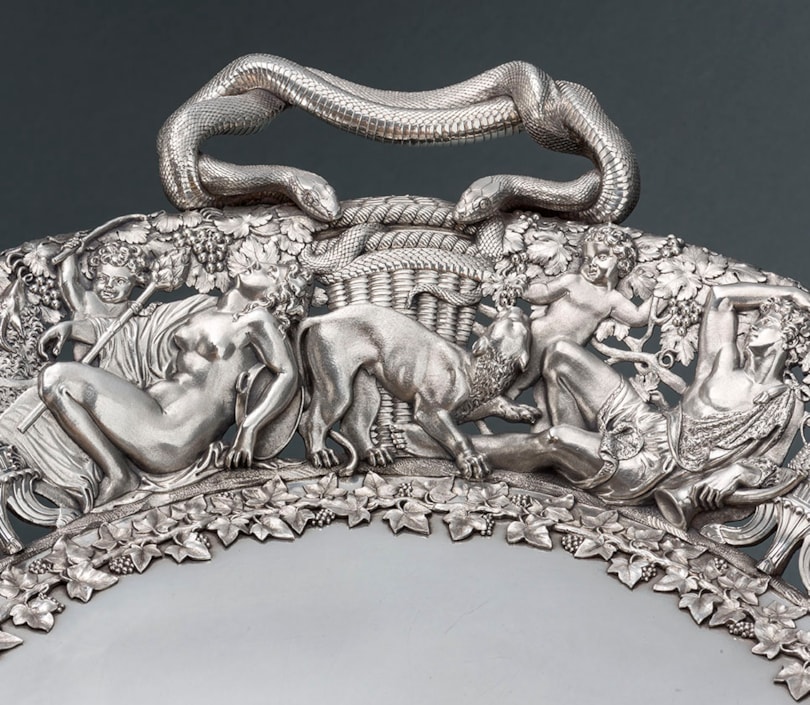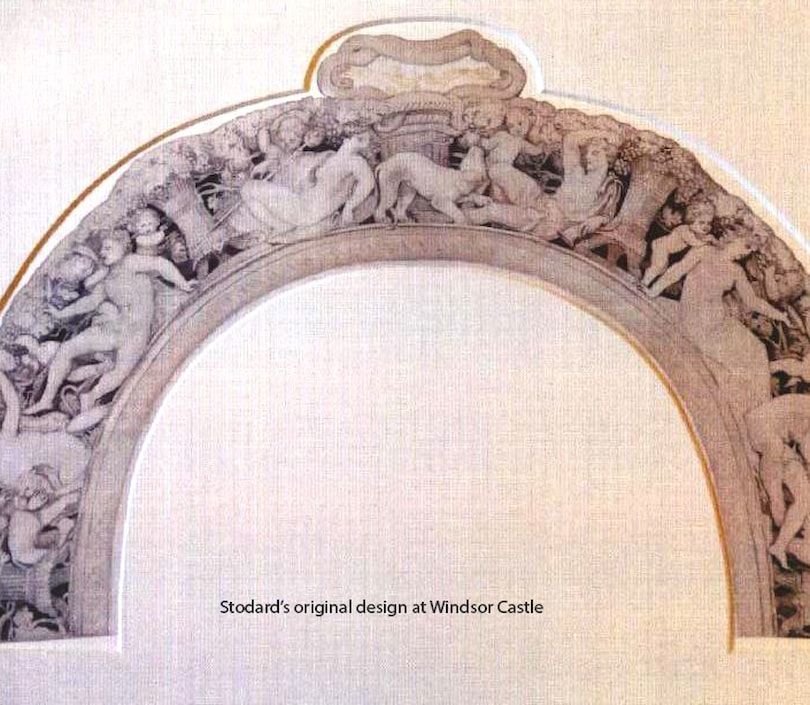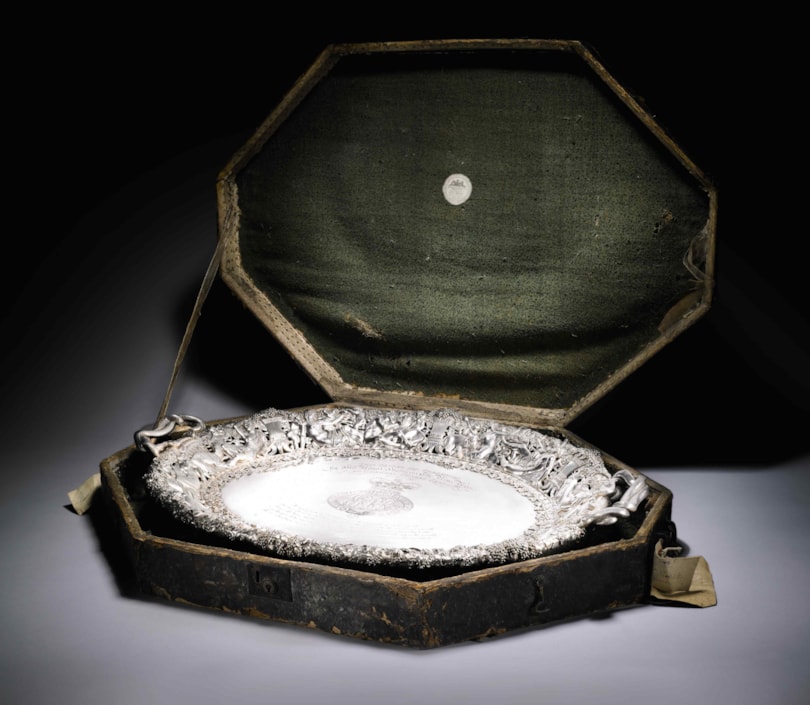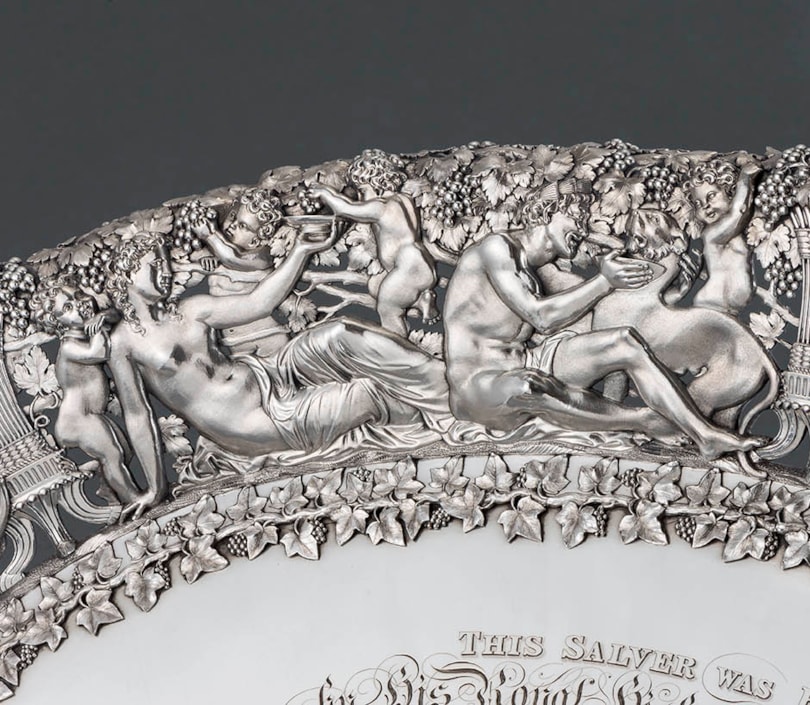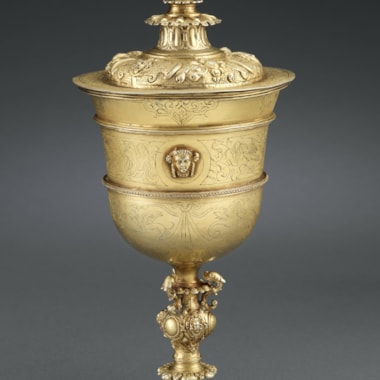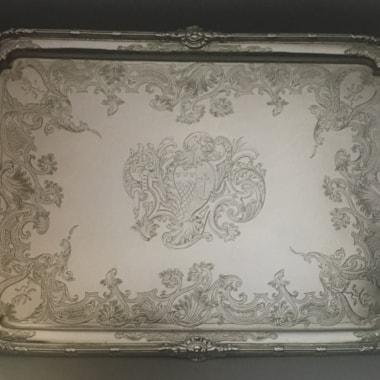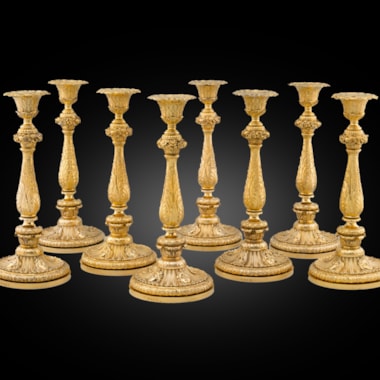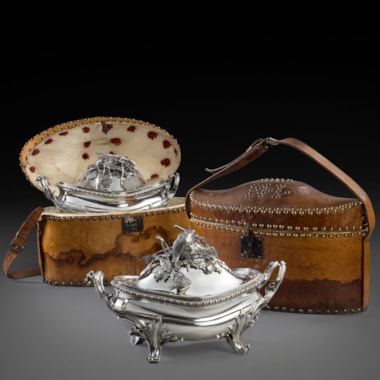Oval, on four formal panel supports, the wide cast and pierced border decorated with bacchanal figures, putti and panthers below grape-laden vines, entwined snake handles, the centre engraved with the Prince Regent's cypher within an inscription, the underside engraved with the recipient's initials in monogram (TG) above the date: '2nd. MAY, 1816,' further stamped: 'RUNDELL BRIDGE ET RUNDELL ARIFICES REGIS ET PRINCIPIS WALLIÆ REGENTIS BRITANNIAS,' and scratch engraved: '4219'; in original tooled leather case, the green baize lining with affixed printed paper label: 'RUNDELL, BRIDGE, / & RUNDELL / Goldsmiths Jewellers / Watch Makers &c /To their Majesties / Their Royal Highnesses the / Prince Regent Duke of York / and ROYAL FAMILY,/ Ludgate Hill / LONDON'.
General Thomas Garth was born in 1744, one of the sons of John Garth (1701-1764), sometime Recorder and MP for Devizes, by his wife, Rebecca, daughter of John Brompton and granddaughter of Sir Richard Raynsford, Lord Chief Justice of the King’s Bench. He entered the army in 1762 as a cornet in the 1stDragoons and, following a distinguished career, was eventually awarded the rank of General on 4 June 1814. Meanwhile, in 1795, he was appointed an equerry to George III. He was also a friend of the King and he often welcomed the royal family to Ilsington House (The Old Manor), a William and Mary mansion at Puddletown near Weymouth, Dorset, which he rented from 1780 until his death.
The diarist Charles Greville described Garth, who was small of stature and afflicted with a claret-coloured facial birthmark, as ‘a hideous old devil.’ In compensation, however, according to Flora Fraser, ‘contemporaries speak highly of his wit and, indeed, of his stories of his own soldering adventures in the West Indies.’
Apart from his military career, General Garth is chiefly remembered for two other reasons, both of which are intimately connected with the royal family. The first concerns a young man, Thomas (‘Tommy’) Garth of the 15th Hussars (1800-1873), whom he acknowledged as his son and whose mother is generally accepted to have been Princess Sophia (1777-1848), George III and Queen Caroline’s fifth daughter.2 The second is General Garth’s nomination by the Prince Regent as guardian to his daughter, Princess Charlotte Augusta of Wales during the months prior to her marriage to Prince Leopold of Saxe-Coburg-Saalfeld (later King of the Belgians). It was for this service that Garth was presented with this tray or, as it was originally described, salver. Charlotte’s wedding took place on 2 May 1816 (the date engraved on the tray) in the Crimson Drawing Room at Carlton House, Pall Mall, London. A copy of Garth’s letter conveying his thanks to the Prince Regent survives: ‘Sir! Her Majesty [Queen Caroline] having Graciously delivered The Prince Regents flattering message, I feel it my Duty from Attachment to His Majesty and The Royal Family, to accept of the Situation which His Royal Highness The Prince Regent has thought proper to place me in for a time; understanding that I am only answerable to His Royal Highness for my Conduct, and trust that I shall be able to prove my Attachment by my honesty and integrity, which I have ever piqued Myself upon: But I humbly entreat for fear of any Mistake that His Royal Highness will Graciously please to give me His Instructions in Writing Signed by Himself.
‘Your Royal Highnesss devoted Servant Thos. Garth’.
The only published reference to this otherwise unrecorded royal gift is in Anna Eliza Bray’s biography of the artist, Thomas Stothard (1755-1834). Mrs. Bray recounts in some detail Stothard’s work for the Wellington Shield, which was commissioned in 1814 through Green, Ward & Green, goldsmiths of Ludgate Street, and made in Benjamin Smith’s Camberwell factory. She then writes, ‘Before I entirely quit the subject of works in silver, I may as well state another thing not generally known respecting this great painter [Stothard], that he made many designs for chased plate that were of extraordinary beauty. The principal was for the border for an oval salver that was executed for King George the Fourth [i.e. The Prince Regent]. It was composed of a most admirable group of Bacchanalian figures.’
The immediate fate of General Garth’s tray following his death on 18 November 1829 is not entirely clear; there can be no doubt, however, that it has remained in his family until the present. By his will, signed on 12 September 1829 and proved on 10 December that year, he bequeathed his house, 32 Grosvenor Place, Mayfair, with its plate, household furniture and personal effects, together with his effects in and about Ilsington House, to ‘Tommy’ Garth
General Thomas Garth (1744-1829)
Captain Thomas (Tommy) Garth of the 15th Hussars (1800-1873)
Captain Thomas Garth, RN (1781-1841)
Thomas Colleton Garth (1821-1907)
Louisa Anne Shiffner (née Garth, 1836-1910)
You May Also Like




































































